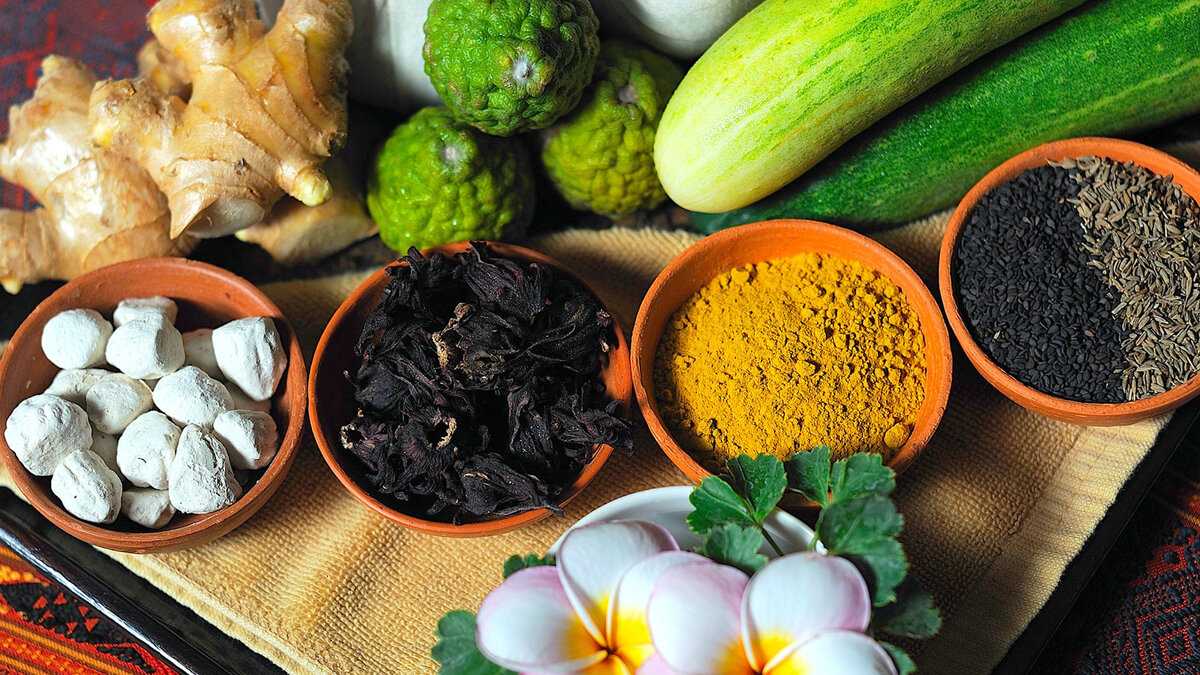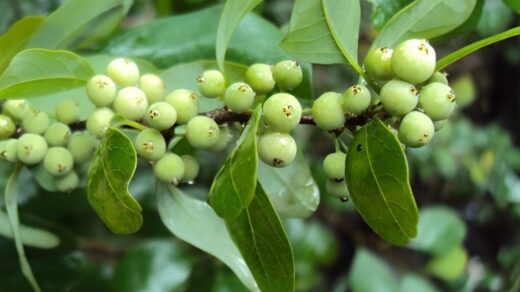Pitta Imbalance: From Symptoms, Causes to Solutions and More
Pitta dosha is one of the three fundamental energies or principles in Ayurveda, the traditional system of medicine from India. It represents the qualities of fire and water and is responsible for various physiological and psychological functions in the body.
Each individual has a unique combination of the three doshas (Vata, Pitta, and Kapha), which make up their constitution or Prakriti. Understanding your constitution can help you make lifestyle, dietary, and other choices that promote balance and well-being.
Characteristics of Pitta Dosha
Here are some key characteristics of Pitta dosha:
1. Qualities: Pitta is associated with the qualities of hot, sharp, intense, oily, light, and mobile.
2. Elements: It is primarily composed of fire and water elements.
3. Physical Characteristics: People with a dominant Pitta constitution tend to have a moderate build, with well-defined muscles. They often have warm skin that might be prone to rashes, acne, or inflammation. Their hair can be fine and might start graying early. They also tend to have a strong appetite and good digestion.
4. Mental and Emotional Traits: Pitta individuals are often characterized by their sharp intellect, strong willpower, and intense focus. They can be goal-oriented, organized, and natural leaders. However, imbalanced Pitta can lead to irritability, anger, impatience, and a tendency to be critical or judgmental.
5. Seasonal Influence: Pitta dosha is most influenced during the hot months of summer when its fiery qualities can become aggravated. It’s important for Pitta individuals to maintain balance during this time.
6. Balanced Pitta: When Pitta is in balance, individuals experience good digestion, clear thinking, enthusiasm, and a warm, friendly demeanor. They are productive and achieve their goals effectively.
7. Imbalanced Pitta: Excess Pitta can manifest as physical symptoms like inflammation, acidity, skin rashes, and digestive problems. On a mental and emotional level, it can lead to aggression, burnout, stress, and perfectionism.
Tips: To balance Pitta dosha, it’s important to follow the guidelines mentioned in the previous response, which include adopting a cooling diet, practicing relaxation techniques, and engaging in activities that help reduce excess heat and intensity.
Ayurveda aims to promote harmony within the body and mind by adjusting lifestyle choices to suit your unique constitution and the imbalances you might be experiencing.
Pitta Dosha Symptoms
The symptoms associated with an imbalanced Pitta dosha:
1. Increased Hunger and/or Thirst: An imbalanced Pitta can lead to heightened metabolic activity and increased digestive fire. This can result in excessive hunger and thirst as the body demands more energy and fluids to support this heightened process.
2. Infection: When Pitta is excessive, it can weaken the immune system’s ability to fight off infections. The body’s natural defense mechanisms may become compromised, making it more susceptible to various infections and inflammations.
3. Greying and/or Loss of Hair: Imbalanced Pitta can affect the hair follicles, leading to premature greying of hair or hair loss. The heat-related inflammation disrupts the normal functioning of hair follicles, resulting in these changes.
4. Hormonal Imbalance: Pitta plays a role in regulating hormones, including those related to metabolism, digestion, and stress response. An imbalanced Pitta can lead to disruptions in hormonal levels, affecting various bodily functions and potentially leading to issues like irregular menstrual cycles, digestive disturbances, and more.
5. Giddiness and/or Migraines: Excess Pitta can cause heat to accumulate in the head region, resulting in symptoms like giddiness and migraines. These headaches are often characterized by a throbbing quality and sensitivity to light, which are typical of heat-induced imbalances.
6. Hot Flashes and Want for Cooling Substances: Heat-related symptoms like hot flashes and excessive sweating indicate that the body’s internal temperature regulation is compromised. The desire for cooling substances is a natural response to counteract this excess heat.
7. Bad Breath/Body Odor: An imbalanced Pitta can lead to the accumulation of toxins and excess heat in the body. This can manifest as bad breath and strong body odor due to the body’s attempt to eliminate these waste products through various channels.
8. Sore Throat: Excess heat and inflammation in the throat area can lead to a sore throat. This can be exacerbated by factors such as consuming overly spicy or hot foods.
9. Nausea Upon Missing Meals: Pitta individuals tend to have a robust appetite due to their strong digestion. Skipping meals disrupts the regularity of food intake, leading to imbalances in blood sugar levels and potentially causing feelings of nausea and irritability.
10. Insomnia: Imbalanced Pitta can result in an overactive mind and heightened mental activity, making it challenging to relax and fall asleep. This can lead to insomnia or restless sleep patterns.
11. Tenderness in Breasts/Testicles: Excessive heat can lead to inflammation and tenderness in various parts of the body, including the breasts in women and the testicles in men. This discomfort is a sign of an aggravated Pitta.
12. Heavy or Painful Menstrual Bleeding: Pitta imbalances can disrupt the natural flow of the menstrual cycle, leading to heavy or painful bleeding. The increased heat and inflammation can contribute to inflammation of the uterine lining, causing these symptoms.
Tips: Addressing these symptoms involves adopting cooling and calming practices, as well as making dietary and lifestyle adjustments to pacify Pitta dosha.
Behavioral Symptoms of Pitta Dosha
When Pitta is excessive, these traits can become prominent. On the other hand, a balanced Pitta dosha fosters positive qualities and behaviors that contribute to overall well-being. Here are some of these behavioral aspects:
1. Impatience: Excess Pitta can lead to impatience and a lack of tolerance for delays or obstacles.
2. Frustration: When things don’t go as planned, imbalanced Pitta can result in frustration and irritation.
3. Inflated Ego: An aggravated Pitta can lead to an overly inflated sense of self and a tendency to seek recognition and attention.
4. Overly Goal/Result Oriented: Excessive Pitta energy can make individuals overly focused on achieving goals, often at the expense of other important aspects of life.
5. Resentment: Imbalanced Pitta may lead to feelings of resentment when expectations are not met.
6. Jealousy: Pitta imbalances can contribute to jealousy and competitiveness, driven by the desire to outperform others.
7. Judgmental: An imbalanced Pitta dosha can make individuals critical and judgmental of themselves and others.
8. Sense of Instability: Excess Pitta can create a sense of inner turmoil and instability, causing emotional unrest.
9. Perfectionist Tendencies: Pitta individuals might develop perfectionist tendencies, setting high standards for themselves and feeling anxious when things are not flawless.
Balanced Pitta Dosha Behavioral Traits:
A balanced Pitta dosha fosters positive traits that contribute to mental clarity, effective decision-making, and healthy self-esteem:
1. Increased Focus: Balanced Pitta enhances the ability to concentrate and maintain focus on tasks.
2. Problem-Solving Abilities: A balanced Pitta provides the clarity and rational thinking needed to effectively solve problems.
3. Confidence: Balanced Pitta individuals exude confidence without displaying ego-driven behaviors.
4. Goal-Pursuit with Balance: Balanced Pitta individuals can set and pursue goals with determination while maintaining a sense of balance and adaptability.
5. Leadership Qualities: When Pitta is in harmony, it contributes to strong leadership skills with fairness and consideration for others.
6. Clear Communication: Balanced Pitta supports clear and effective communication without unnecessary aggression or dominance.
7. Passion and Enthusiasm: Balanced Pitta fuels passion and enthusiasm for life’s pursuits without becoming overly aggressive.
8. Healthy Self-Esteem: Individuals with balanced Pitta have healthy self-esteem that’s not driven by external validation.
9. Calm and Objective: Balanced Pitta fosters the ability to remain calm, objective, and non-reactive even in challenging situations.
10. Determined yet Patient: Balanced Pitta individuals exhibit determination and drive while also possessing the patience to navigate obstacles.
Note: Ayurveda aims to help individuals maintain or restore balance within themselves. If you notice imbalances in your behavioral traits that align with an aggravated Pitta dosha follow these tips.
Start practicing the cooling and calming techniques mentioned earlier, along with mindfulness, meditation, and cultivating a balanced lifestyle, can aid in restoring equilibrium and promoting overall well-being.
Causes of Pitta Dosha Imbalance
You’ve outlined several common causes of Pitta dosha imbalance in Ayurveda. These factors can contribute to an increase in Pitta’s qualities, leading to various physical and psychological symptoms associated with an aggravated Pitta dosha. Let’s go over each cause in more detail:
1. Eating Pitta Aggravating Foods: Consuming foods that are pungent, sour, salty, very spicy, deep-fried, processed, and high in red meat can increase the heat and intensity of Pitta. These foods stimulate digestive fire and can lead to inflammation, acidity, and other imbalances.
2. Consuming Stimulants: Caffeine from sources like coffee, black tea, nicotine from smoking, and alcohol are considered stimulants. They can overstimulate the nervous system, raise internal heat, and contribute to Pitta imbalance.
3. Excessive Sun Exposure: Overexposure to the sun can elevate the already warm qualities of Pitta. It’s like adding fuel to the fire, potentially leading to skin irritations, sunburn, and other heat-related issues.
4. Emotional Stress: Emotional stress, frustration, anger, and irritability can all aggravate Pitta. These emotions are associated with the fire element of Pitta and can lead to imbalances if not managed properly.
5. Overworking and Under Resting: Pushing yourself too hard without adequate rest can increase internal heat and lead to burnout. Pitta individuals are often ambitious and driven, but excessive work without proper self-care can lead to imbalances.
It’s important to note that Ayurveda focuses on prevention and balance. Recognizing these causes and making adjustments in your lifestyle and habits can help keep Pitta dosha in check. Here are some strategies to counteract these causes:
1. Diet: Choose foods that have a cooling effect, such as sweet and bitter tastes. Emphasize fresh, organic fruits and vegetables, grains, and lean proteins. Minimize the consumption of pungent, sour, and salty foods.
2. Avoid Stimulants: Limit or reduce caffeine, alcohol, nicotine, and other stimulants that can increase Pitta.
3. Sun Protection: When exposed to the sun, use protective measures like hats, sunglasses, and sunscreen to minimize the impact of excessive heat.
4. Stress Management: Engage in stress-reduction techniques such as meditation, deep breathing, and yoga. Managing emotional stress is crucial for maintaining balanced Pitta.
5. Work-Life Balance: Prioritize rest and relaxation. Maintain a healthy work-life balance to prevent burnout and excessive Pitta accumulation.
Effects of Pitta Dosha Imbalance
An aggravated Pitta can indeed contribute to these conditions due to its fiery, intense, and inflammatory nature. Here’s the effects of an imbalanced Pitta dosha:
1. Heartburn: Excess stomach acid and heat can lead to heartburn, acidity, and discomfort in the chest and upper abdomen.
2. Skin Issues (Sunburns, Eczema, Dermatitis, Acne): Imbalanced Pitta can lead to skin conditions like sunburns due to sensitivity, as well as inflammatory skin issues like eczema, dermatitis, and acne.
3. Acid Reflux, Peptic Ulcers: Pitta imbalance can cause excessive acid production in the stomach, leading to acid reflux and contributing to the development of peptic ulcers.
4. Fever: Elevated body temperature is a classic manifestation of increased Pitta. An aggravated Pitta can lead to fever, especially during times of infection or inflammation.
5. Blood Clots and Strokes: Pitta imbalances can contribute to excessive heat and inflammation, which are factors associated with blood clot formation and an increased risk of strokes.
6. Kidney Infections: Excess heat and inflammation in the body can contribute to kidney infections and urinary tract issues.
7. Hyperthyroidism: An overactive thyroid, characterized by hyperthyroidism, can be influenced by an imbalanced Pitta dosha due to its heating qualities.
8. Jaundice: Pitta imbalances can affect the liver’s ability to process bilirubin, leading to conditions like jaundice.
9. Acute Inflammation in Joints (Arthritis): Pitta imbalances can lead to inflammation in the joints, contributing to conditions like arthritis.
10. Diarrhea: Imbalanced Pitta can lead to hyperactive digestion, causing diarrhea and loose stools.
11. Chronic Fatigue Syndrome: Chronic fatigue can result from an aggravated Pitta, as excessive heat and overactivity can drain the body’s energy.
12. Poor Vision or Blindness: Excessive heat in the eyes can lead to poor vision and, in severe cases, contribute to eye conditions that may lead to partial or complete blindness.
13. Autoimmune Disorders: Pitta imbalances can weaken the immune system, increasing susceptibility to autoimmune disorders where the immune system attacks the body’s own tissues.
14. Obsessive-Compulsive Disorders/Depression: An imbalanced Pitta can manifest as obsessive tendencies and emotional imbalances, contributing to conditions like obsessive-compulsive disorder and depression.
Tips: Balancing Pitta through dietary, lifestyle, and herbal interventions can help alleviate these effects and prevent their onset.
If you suspect an imbalance in Pitta dosha, consulting with an Ayurvedic practitioner can provide personalized guidance and treatment to restore harmony and well-being.
List of Ayurvedic Pitta Dosha Medicines
Absolutely, Ayurveda offers a range of herbal remedies and medicines that can help balance Pitta dosha and alleviate its associated symptoms.
However, it’s crucial to emphasize that any Ayurvedic medicine or remedy should be taken under the guidance and consultation of a trained Ayurvedic doctor. Here’s some more information about the mentioned Ayurvedic medicines:
1. Amlapittari Vati: This medicine is specifically formulated to address hyperacidity and related symptoms. It contains herbs that help pacify excess Pitta and alleviate conditions like heartburn, acid reflux, and gastritis.
2. Avipattikar Churna: Avipattikar churna is a blend of herbs that supports digestion, reduces acidity, and helps balance Pitta dosha. It’s commonly used to alleviate digestive problems and hyperacidity.
3. Yashtimadhu (Licorice): Yashtimadhu is known for its cooling properties and its ability to soothe the digestive system. It can help with acid peptic diseases, soothing inflamed mucous membranes and promoting healing.
4. Nishamalaki: Nishamalaki is a combination of amla (Indian gooseberry) and bitter gourd. It’s often used as an anti-allergic remedy and can help balance Pitta while addressing allergic reactions.
Note: Consult with a qualified Ayurvedic practitioner, they can assess your individual constitution (Prakriti) and imbalances (Vikriti) and provide personalized recommendations, including dietary modifications, lifestyle changes, herbal remedies, and therapies tailored to your unique needs
How To Balance Pitta Dosha
Balancing Pitta dosha in Ayurveda involves adopting a lifestyle, diet, and practices that help calm the excess heat, intensity, and energy associated with Pitta dosha. Here are 10 Ayurvedic tips for how to reduce Pitta immediately:
1. Cooling Diet: A cooling diet is focused on reducing excess heat and inflammation in the body. Fresh, sweet, and ripe fruits provide natural sugars and hydration. Leafy greens, cucumber, zucchini, and melons are rich in water content and have a cooling effect. Coconut and yogurt have a soothing impact on the digestive system. Avoiding hot, spicy, sour, and salty foods helps prevent further heating and irritation in the body.
2. Regular Meal Times: Pitta benefits from stability and routine. Having regular meal times helps maintain stable blood sugar levels and prevents extreme fluctuations, which can trigger irritability and imbalances in Pitta.
3. Hydration: Staying hydrated with room temperature or cool water helps maintain a balanced body temperature. Adequate hydration supports digestion, detoxification, and overall bodily functions, preventing overheating that can aggravate Pitta.
4. Herbal Teas: Herbal teas made from cooling herbs like mint, coriander, fennel, and chamomile have calming properties that can help soothe excess Pitta energy. These teas support digestion, reduce inflammation, and promote relaxation.
5. Avoid Excessive Heat: Pitta individuals are sensitive to excess heat. Limiting direct sun exposure during the hottest parts of the day and avoiding intense physical activities in hot conditions prevents overheating and reduces the chances of imbalances.
6. Oil Massage: Self-massage (Abhyanga) with cooling oils like coconut or sunflower oil helps relax the body and mind. It improves circulation, nourishes the skin, and calms the nervous system, which is especially beneficial for reducing Pitta-related stress and tension.
7. Yoga and Exercise: Engaging in gentle and cooling exercises like swimming, walking, and yoga helps release excess heat from the body and mind. Avoiding overly intense or competitive workouts prevents overexertion, which can trigger Pitta imbalances.
8. Meditation and Relaxation: Practicing meditation, deep breathing, and relaxation techniques helps calm the mind, reduce stress, and balance the emotional intensity associated with Pitta. These practices promote mental clarity and a sense of tranquility.
9. Adequate Rest: Getting sufficient restful sleep during the night supports the body’s natural healing processes and helps prevent burnout. Establishing a regular sleep schedule contributes to overall Pitta balance.
10. Reduce Stimulants: Minimizing or avoiding caffeine, alcohol, and spicy foods prevents overstimulation and excessive heat production in the body. These substances can intensify Pitta’s characteristics and lead to imbalances.
Remember that Ayurveda is a holistic approach, so these tips should be adapted to your individual constitution and any imbalances you’re experiencing. It’s always a good idea to consult with an Ayurvedic practitioner to get personalized guidance tailored to your unique needs.


























